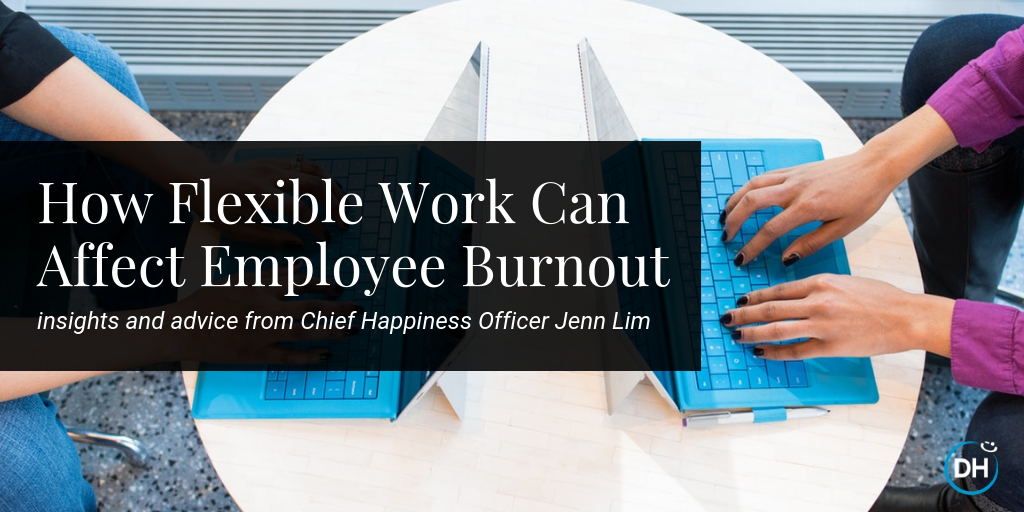
If you've ever felt burned out from working too hard or too often, there are plenty of people who feel the same way. Workplace burnout can ruin productivity and the health of your employees [both physically and mentally]. One solution is to offer flexible work options for your employees, including flextime and remote work. Read from CEO Jenn on how it could alleviate burnout:
As big proponents of the Science of Happiness, we support schedules and organizational structures that lead to optimal 'flow.' Flow can be likened to feeling 'in the zone" and is a concept coined by Mihaly Csikszentmihalyi, author of the best-selling book Flow: The Psychology of Optimal Experience. In her Inc.com article, Jenn writes:
It takes an average of 25 minutes to return to the original task flow after you've been interrupted. If you're lucky as a leader or manager to have only ten interruptions a day, you're still losing out on about two hours of productivity.
If you're in HR, you can probably calculate that for an executive leader, this loss in productivity can translate to thousands of dollars per year. You can try calculating it for your role - estimate how many hours of interruptions you get in a day and multiply it by your approximate hourly rate. Don't forget that disruptions can include pings from your cell phone or any other small distractions.
Could there be just as many interruptions at home? Sure, but generally, people are more comfortable at home and aren't subject to as many competitors for their attention [i.e., everyone at the office]. With less cubicle chatter, random stops by colleagues, or overheard conversations, you might find that there is a significantly lower number of distractions at home.
Related: Can Your Company Profit from a Happier Culture? [INFOGRAPHIC]
According to Gallup’s State of the American Workplace 2017, 53 percent of employees say having a job that allows for greater work-life balance and better personal well-being is “very important” to them. Knowing that at least half of your teams desire a healthier work/life integration, it's valuable to see how your organization can provide a structure that supports it [i.e., flextime, remote work, more PTO, etc.].
In the Inc.com article, Jenn points this out:
It becomes impossible to juggle a positive work/life integration when you feel pressed for time. According to a 2015 Deloitte survey of over 1,000 full-time employees, 32 percent say they've consistently placed work commitments over personal ones in the past six months.


Bri is the Impact Storyteller on the Delivering Happiness team. Working previously as a freelancer, her goal has always been to work with passionate people who are focused on helping individuals and businesses find their purpose. As part of DH, she now gets to accomplish that every day. Bri resides in Arizona and is lucky enough to enjoy the sun all year round.